Found some strange-looking tiny black bugs crawling near windows in your home?
Some bugs drift instantly into the home through accessible windows while others wriggle around the windows, particularly fascinated by indoor lamps.
These tiny black bugs can hover and fly around effortlessly, making their way through your home. Some of these bugs cause nuisance without causing much effect on your house, while others come in mobs and can bite or even cause infestations.
A large number of these tiny black bugs know how to bite. All such bugs found in homes need to be dealt with seriously as these could be preying bugs.
What Attract Bugs Enter In The House?
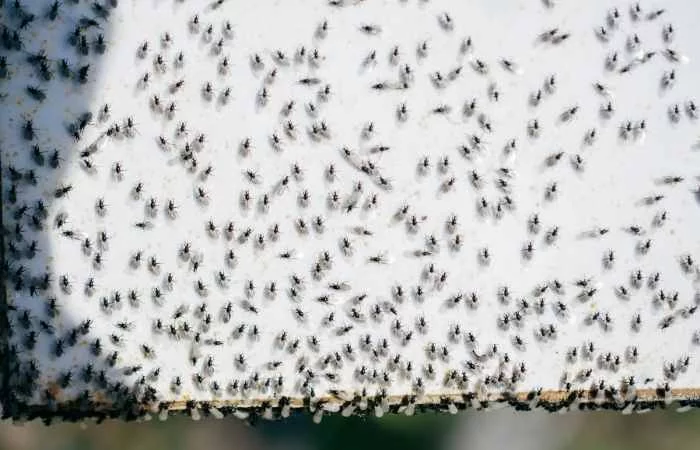
These bugs are generally flying towards or away from something when striding indoors. They are enticed by food but might also sneak in for a hideout during the unfavorable climate.
Here are the primary reasons for these bugs to move into or around your residence.
Indoor Lights
Bright lights fascinate minor bugs of all kinds. Many nocturnal bugs come out at dusk looking for food. They follow the glowing lights into your house, particularly when you have an accessible and open window. Lights inside and outside your home attract nearly all minor bugs, particularly those that can fly.
Other types of tiny black bugs only pursue the lights as they realize that these glowing lights entice little bugs they can consume; hence it would be the ideal spot for finding food.
Bad Weather
Horrible climates, stormy days, and cold weather, in general, are significant factors for flies and minor bugs for moving indoors. Most bugs do not like conditions of extreme cold or heat. They most often fly away whenever such drastic weather conditions are to come. You might’ve noticed that you often can’t see as many bugs and insects around you when the weather is at its peak in either summer or winter. When the weather softens, these insects can be seen in and around your homes.
Vegetation Around The House
Vegetation is a breeding ground for tiny black bugs. All categories of bugs that consume pollen and nectar are attracted indoors whenever the house is surrounded by greenery. Ripe fruits and vegetables draw in ants or bees, which can also enter the premises and fly indoors.
Food
Food is one of the biggest motivators for tiny black bugs to move indoors. Termites are the most relevant example of small black bugs that utilize the house as a diet as they turn decaying timber into their diet.
Fruit flies are another example of how ripe fruits inside the home attract various kinds of tiny black pests.
What Are The Common Tiny Black Bugs In House Near Window
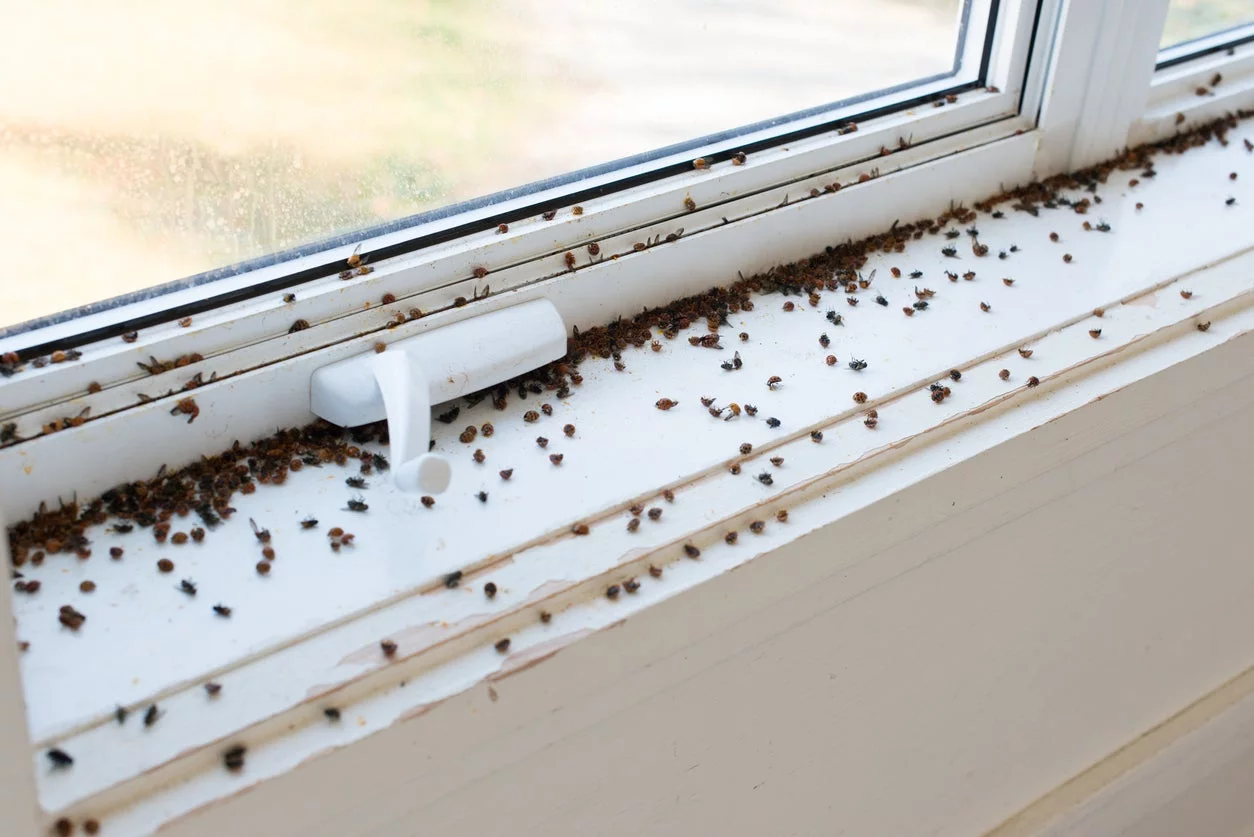
Following are the general categories of tiny black bugs found in houses searching for diet or shelter.
Carpenter Ants
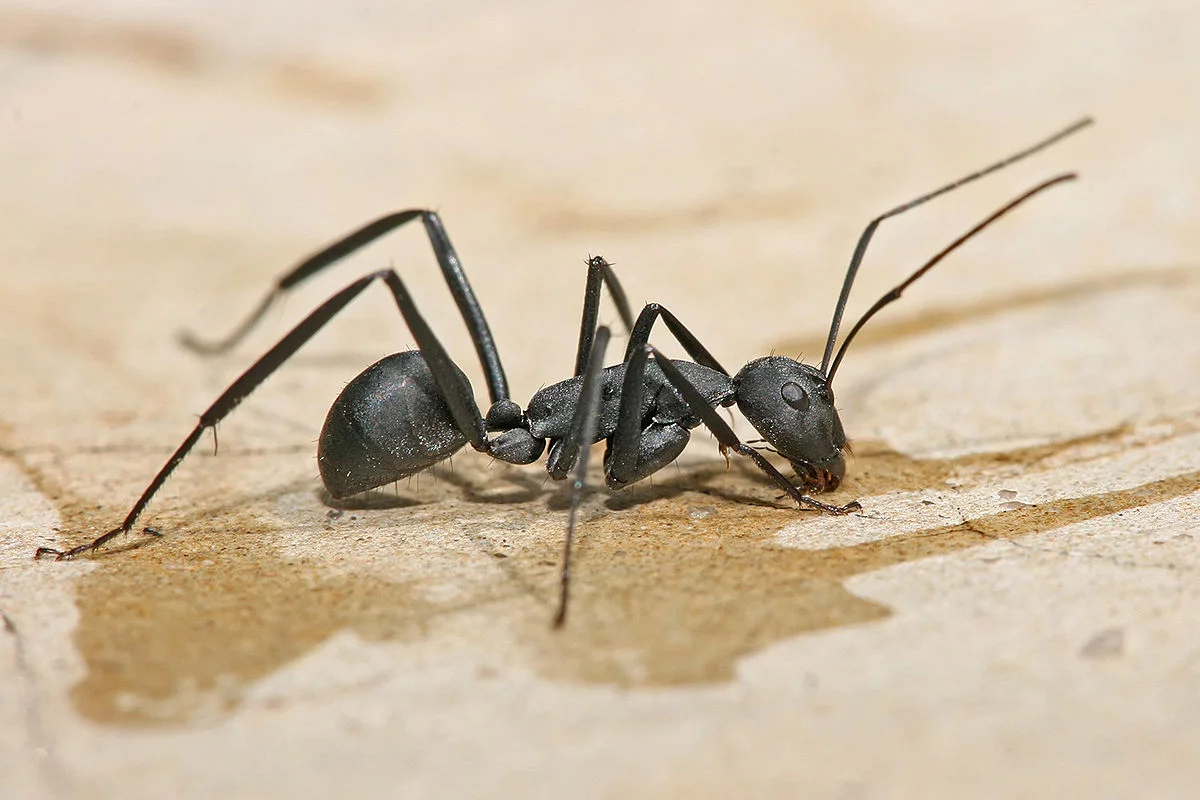
Carpenter ants are one of the most commonly found black bugs in houses near windows. These ants are known for digging passageways in window structures to lay their eggs.
While they do not consume timber like termites, they utilize timber to lay their eggs. You can find carpenter ants throughout window sills, mainly during the spring, but they might also make your home their nesting hole during winters. These ants can be identified by their black or black and red torso.
They are undoubtedly tiny compared to other kinds of ants. While some carpenter ants can be as small as 3/8 inches, the more enormous worker category ants thrive to ½ inches. These ants are often sighted in the house, on the windowsills during springtime. While outdoors, carpenter ants eat dead or living insects, which they might also discover indoors.
Nonetheless, these ants have protein-rich and sugar-rich diets. Carpenter ants can also move into your homes during winters searching for a cozy area to nest and lay their eggs. These ants can be with wings or wingless. An invasion of carpenter ants in your home cannot be overlooked under any circumstances since these ants leave behind a scent for other ants to follow. Soon enough, you find yourself with hundreds of ants on your window sills.
How to get rid of Carpenter Ants?
You can eliminate scent trails by making a solution of water and vinegar and cleaning the surface. You can also mix sugar and baking soda to create a bait, where the sugar will attract them and the baking soda will naturally kill them.
Stink Bugs

Stink bugs are known for entering indoors, looking for food and warmth. Numerous kinds of such tiny black bugs in the house can be found mainly around windows. The Black stink bug and the Marmorated stink bug are the varieties fascinated to diet during the summer.
Berries, apples, and fruits probably found in your home draw in these bugs, but also if you have grown fruit trees around your residence. Stink bugs come around in June on the onset of ripening of the very first fruits of the season. They might also infiltrate houses to escape the summer heat and find a more relaxed spot to spend the hot season.
Since various stink bugs infiltrate houses to elude the cold climate, they are very often found in some complex to reach corners of the house. These bugs are more brutal to eradicate from your homes as they lack natural predators, and the task falls upon you entirely. They taste horrible and produce bad smells are significant reasons why stink bugs are safe from predators such as birds.
How to get rid of Stink Bugs?
To eliminate excess exterior lighting, consider yellow bulbs or sodium-vapor lights instead of exterior light bulbs, which will be less attractive to stink bugs.
Termites

Termites are some of the most dreaded kinds of tiny black bugs you can find around your house’s windows. Several termites are tan, light yellow, or white. Subterranean termites of the Rhinotermitidae are either brown or black.
These tiny black bugs grow up to 1/8 inches and can be specified by their extended lean torso and six legs. Termites of this genus exist in all US states (except Alaska). In most cases, it might already be too late by the time you find these termites crawling in and around your windows.
Some of the first indications of subterranean house termite infestation are to find mud canals or mud hallways from the bottom of the home. These termites nest in the bottom and create lean mud canals to enter the house. Another early indication that these termites might infect your house is if there is any timber that squeaks hollow when thumped or stepped upon.
These termites feed upon deteriorating timber, the primary type of timber they will be moving and eating through in the house. If you find your window contour hollow or weathered down, check for these termites striding around the window.
How to get rid of Termites?
The most effective way to eliminate termites is to enlist the help of a professional pest control company. Their expertise, knowledge, and commercial-grade products and equipment make them better equipped than any homeowner to address the issue adequately.
Springtails
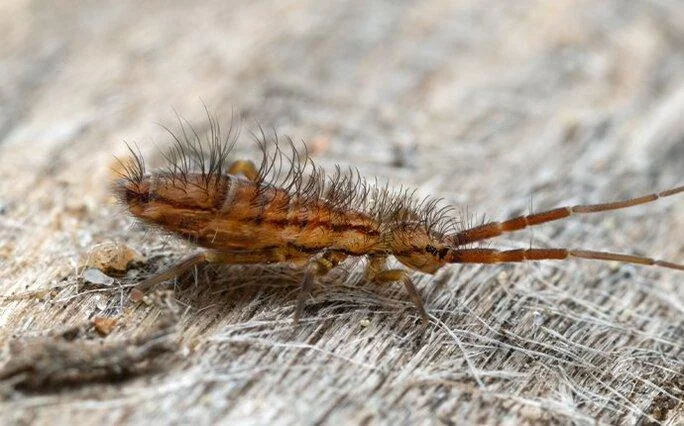
Springtails are known to choose highly humid environments. This is why they can be seen around windows since they are the first contact point with any rain and precipitation. Springtails are just nuisance insects that do not destroy houses or wood.
They nourish organic material such as plant fungi and deteriorating plant roots. Hence, they are mainly found in houses with a lot of leafage and greenery.
Springtails can be a few of the essentially disturbing irritant insects in the winter as they are not affected by the cold climate. These black insects are frequently seen effortlessly moving around, even on snow.
How to get rid of Springtails?
Enhancing a heat source and warmth next to the windows lessens and even removes moisture. Another technique to keep them away from windows and fences is to prepare mud precipitation categories around the home. Elevated moisture mud turns springtail reproduction.
Carpet Beetles
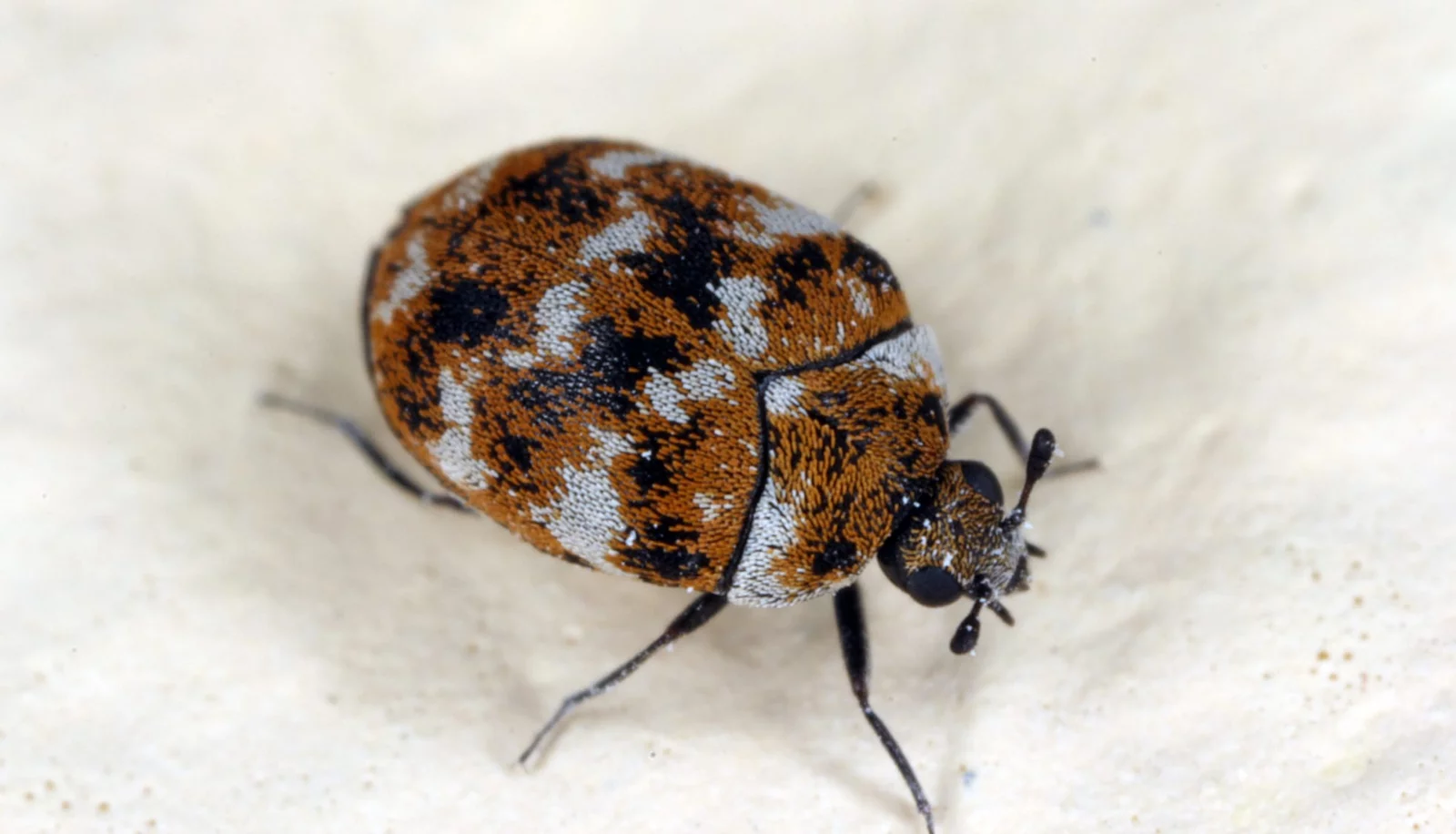
Carpet beetles such as the Black rug beetle (Attagenus unicolor) are among the extensively destructive categories of black bugs that use windows to get inside. As their name suggests, these bugs are known to harm home furnishings such as carpets.
Carpet beetles consume keratin-rich food, a protein in animal-origin hairs, skin, fibers, and clothes. These black bugs can utilize windows to slide inside and rest eggs. The female Black carpet beetle can lay up to fifty white eggs.
This is why identifying these tiny black bugs in your house or around your windows is extremely serious and crucial to identifying an infestation in its early phase. One of the main reasons these bugs are seen on windows is because they are fascinated by light. They seep through windows during summertime. The sight of these bugs on windows indicates that they are searching for a cozy area to hide and nest in for the winter. They are known to spend winters indoors either as grown-ups or in the form of larvae.
How to get rid of Carpet Beetles?
Regularly vacuum carpets, curtains, and upholstered furniture, paying close attention to potential egg and larvae hiding spots. Wash any fabric items that may have been exposed to carpet beetles in hot water (at least 130°F). Store natural fabrics such as wool and silk in airtight containers or bags. Utilize insecticide sprays to kill adult beetles and larvae. Lastly, seal any cracks or crevices in the home that may allow entry to carpet beetles.
Drugstore Beetles
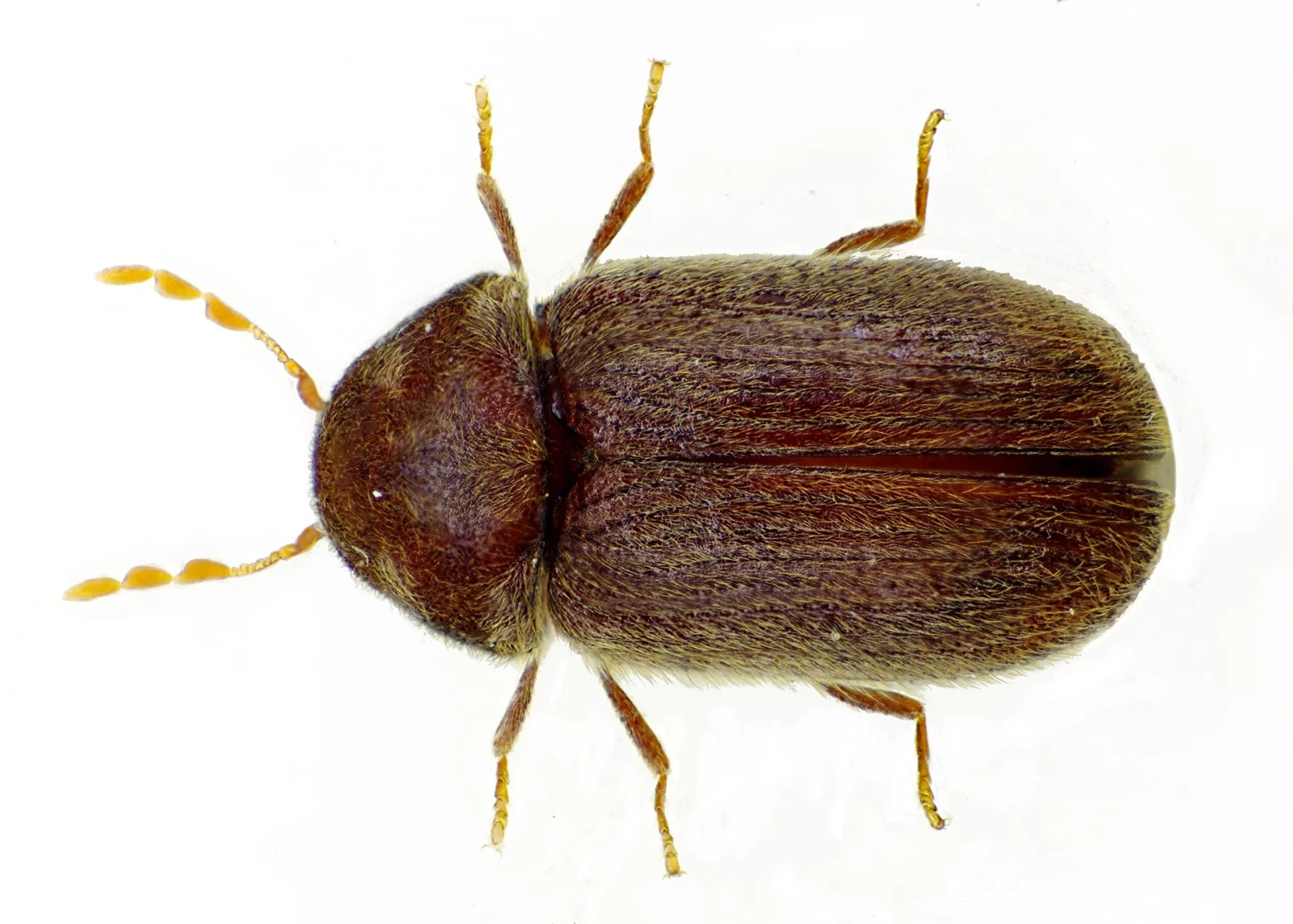
Drugstore beetles are frequently found in the kitchen but can also be seen in distinct home parts. This type of black insect grows up to a size of up to 3.5mm. Drugstore Beetles are usually seen around windows trying to carve their way to the kitchen as they target mainly foodstuff.
More common in storehouses and manufacturing units, these bugs are found consuming cereal, chocolate, flour, and different categories of packed foodstuff you might stock in cartons or pouches in the kitchen. Storing these food items can inversely regulate Drugstore beetles in your home.
Most significantly, you should maintain an eye on natural texture clothes and items such as furs and books as Drugstore beetles fly to them whenever they can not discover more proper diets.
How to get rid of Drugstore Beetles?
Inspect foodstuffs, pantry items, and other stored products for signs of drugstore beetle infestation, such as small, round holes in food packaging, cast skins, and live beetles. Discard any infested items and thoroughly clean the area with a vacuum and a damp cloth. To further reduce the drugstore beetle population, place sticky traps in the pantry and reduce the humidity levels. If the infestation persists, use an insecticidal spray or powder to target the beetles directly.
Gnats
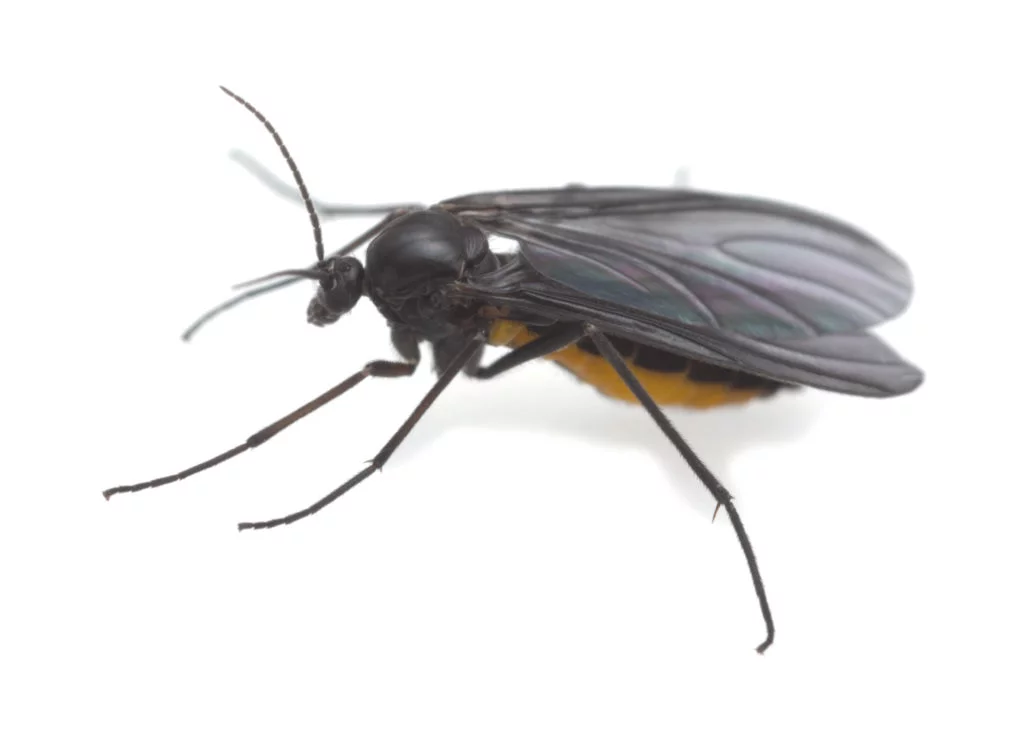
Gnats are widespread in moist regions and seaside locations. These flies can cut, which implies they need to be taken quite seriously compared to other bugs. Tinier than the average housefly, a gnat can be seen around windows during the evening.
It’s usually discovered in larger groups and is numerous. These flies are attracted by deteriorating organic material, moisture, and stagnant water. They bite and are also prone to harm all greenery in and around the home. Gnats rest so many eggs that the developing larvae can kill the host plant.
How to get rid of Gnats?
Few gnat sub-species can be hazardous to pets as well. The black fly is even capable of killing animals with its fatal bites. Shutting off lamps and all unnecessary lights are advised to ensure these tiny black bugs do not reach near the window.
Drain Flies
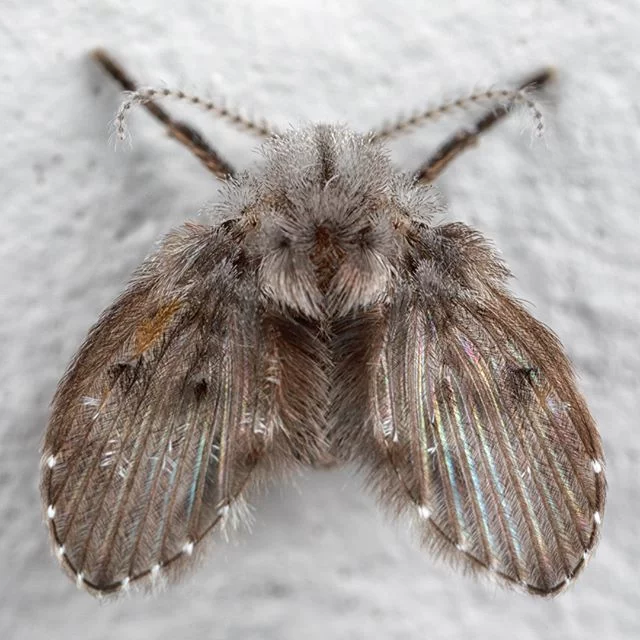
Drain flies are nuisance insects. They do not bite like gnats but can be pretty annoying as they multiply instantly. These pests can be black, gray, or dull in the shade, growing to a height of up to half an inch.
They are found near windows during the sunset as that is the time that they are most active. They aren’t seen as much during the day as they wish to rest in a somewhat shaded place. Drain flies depend on moisture and high humidity, generally caused by puddling and stagnant water around the home.
They multiply in ditches, under the sink, in the bathroom, or next to the toilet. Drain flies breed rapidly and begin reproducing as soon as they arrive adulthood. These flies can live up to two weeks, but with quicker reproduction and complications to eliminate from the home, they appear to live longer.
How to get rid of Drain Flies?
To ensure these insects will not fly indoors, you must remove all puddling water sources around the home. It may always be that these flies come from nearby plants or standing water, so you might need to search and even switch areas of plants if you do not want them to turn up at your window in the twilight.
Fruit Flies

Fruit flies are some of your houses’ most problematic and common black pests. As the word implies, these flies are excited by fruits and sugary foods. Since most homes have ripe fruits in the kitchen, these flies are found surrounding the kitchen window most of the summer days.
Fruit flies barely live in the summer. They have a small lifespan of just two weeks, similar to seep flies. Most importantly, this short lifespan and the rate at which they multiply poses a considerable risk to you and your family.
How to get rid of Fruit Flies?
Fruit flies carry bacteria, especially salmonella and E.coli. This makes them threaten your family’s health. Fruit flies are very tough to fully eliminate unless you entirely rid yourself of your fruits or store them in the refrigerator.
Most fruit flies leave the kitchen and the window when they are attracted to light, and with the temperature diving lower, they eventually die.
Houseflies

Houseflies are a common sight in the summer. Indoors, these flies can survive winter. Most house flies lay eggs and overwinter as larvae. A female housefly can lay as many as a hundred eggs at a time, and due to this high reproduction rate, their multiplication is threatening.
Houseflies are drawn to food and mud. These flies are found in livestock manure and are particularly common around houses and farms growing chickens. Low sanitation or cleanliness around the building are the main reasons why this fly is found where it is. They guide themselves indoors very effortlessly and utilize windows as an accessible entrance inside the home.
How to get rid of Houseflies?
Houseflies love litter and all sorts of waste. It’s best to eliminate garbage and recycle waste cans away from the home to avoid having these flies indoors. One of the biggest reasons to take these flies is their adverse effects on health. Houseflies transmit bacteria, viruses, and pathogens since they often appear in manure. Pests of the genus have spread flood salmonella, giardia, or the Newcastle infection virus.
Rice Weevils
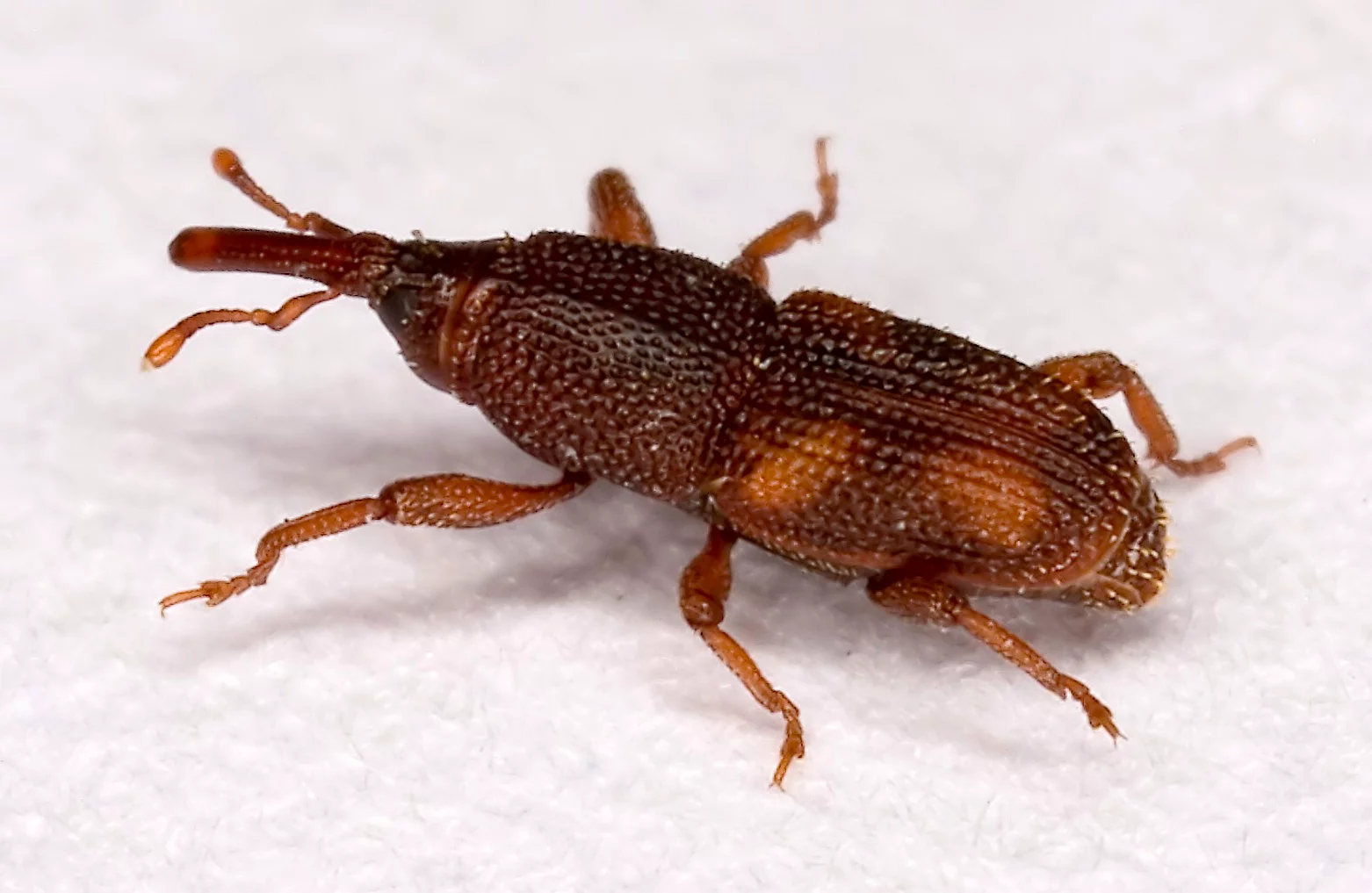
Rice weevils are identified by their snout nose. Most rice weevils can fly around, which explains why they’re found within the kitchen window. These pests target whole cereals such as rice, beans, grains, and other seeds.
However, the more significant concern is that they are not found outside anywhere, as once they find food as they stay in it. Rice weevils are generally seen living in rice stacks or cereal boxes. They live a life of slightly half a year, with few surviving up to two years when based in houses.
These tiny black bugs lay up to four hundred eggs in their lifetime. Female rice weevils have a quick multiplication ratio, making them numerous in an even small quantity of grains.
How to get rid of Rice Weevils?
Rice weevils are also attracted to light. Keeping kitchen lights out when not in the kitchen is the best way to keep these bugs out.
Furthermore, you can put in some curtains to limit the light that can be seen outdoors. Rice weevils can gnaw through plastic cartons, which you can use to your advantage. This is why even unopened food such as rice might end up infested with these bugs, so it is best to keep them out at all costs.
Clover Mites
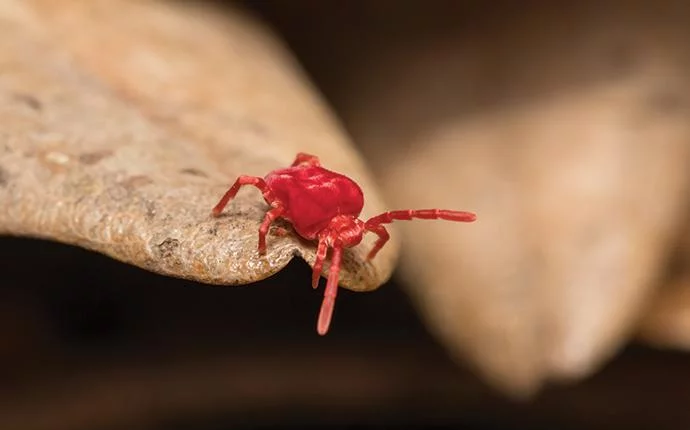
Clover mites are typically seen around windows attempting to make it indoors. These are some of the most minor black bugs that might reach your home. Most people do not even notice clover mites since they are so small. Often mystified with dust or dirt particles, clover mites are found in areas with high fertilizer usage and around field areas.
They might be drawn to lights, and following them, they try to make their way indoors. Clover mites are typically tiny black bugs that cause no harm inside the home. Like all kinds of seasonal bugs, clover mites die in extreme climates. They try to find their way indoors whenever the weather is frigid, or the outdoor environment is too high.
Even though they typically do not carry bacteria, clover mites might be detrimental to your condition as an allergic person. These tiny bugs can generate some of the most acute allergy symptoms, similar to fine dust components.
How to get rid of Clover Mites?
To effectively remove clover mites, thoroughly vacuum the affected area. Once finished, dispose of the vacuum cleaner bag or canister to avoid re-infestation. Additionally, seal any cracks or crevices on the exterior of your home to prevent the mites from entering. If vacuuming and sealing off the area doesn’t seem to work, you may need to use a pesticide. Ensure to read the instructions carefully when selecting a pesticide, as there are different types suited for clover mites.
Our final thoughts on Tiny Black Bugs You Find Near Your Windows…
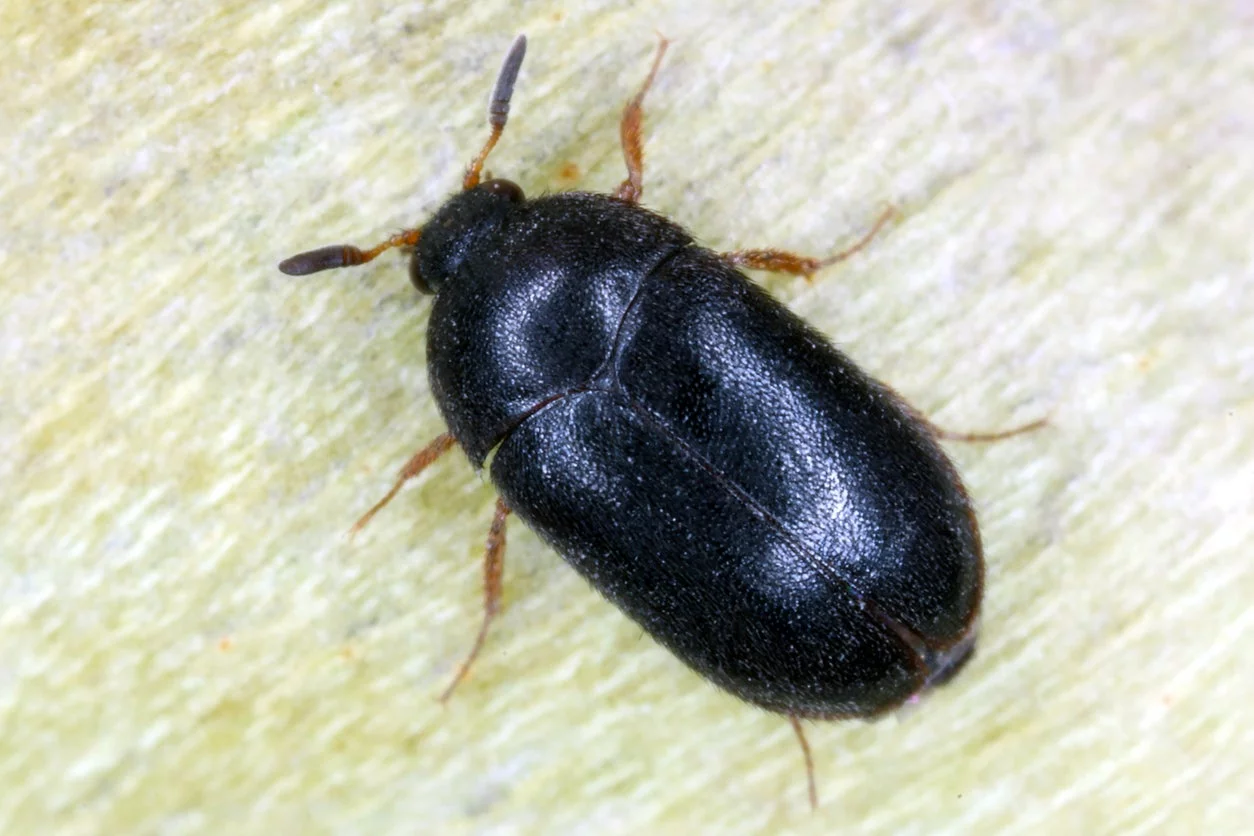
Protecting your home from these tiny black bugs should be not only yours but everyone’s top concern. All different kinds of bugs are attracted to different things, be it food or moisture. While some bugs might carry infectious bacteria diseases, others are harmless.
By going through our article, we hope that we helped you identify what bug infestation that has occurred or is going to occur in your home. All these bugs can be removed using different methods but of course prevention is better than cure. Be sure to carefully examine window frames in the warm, humid weather and keep them under supervision.









